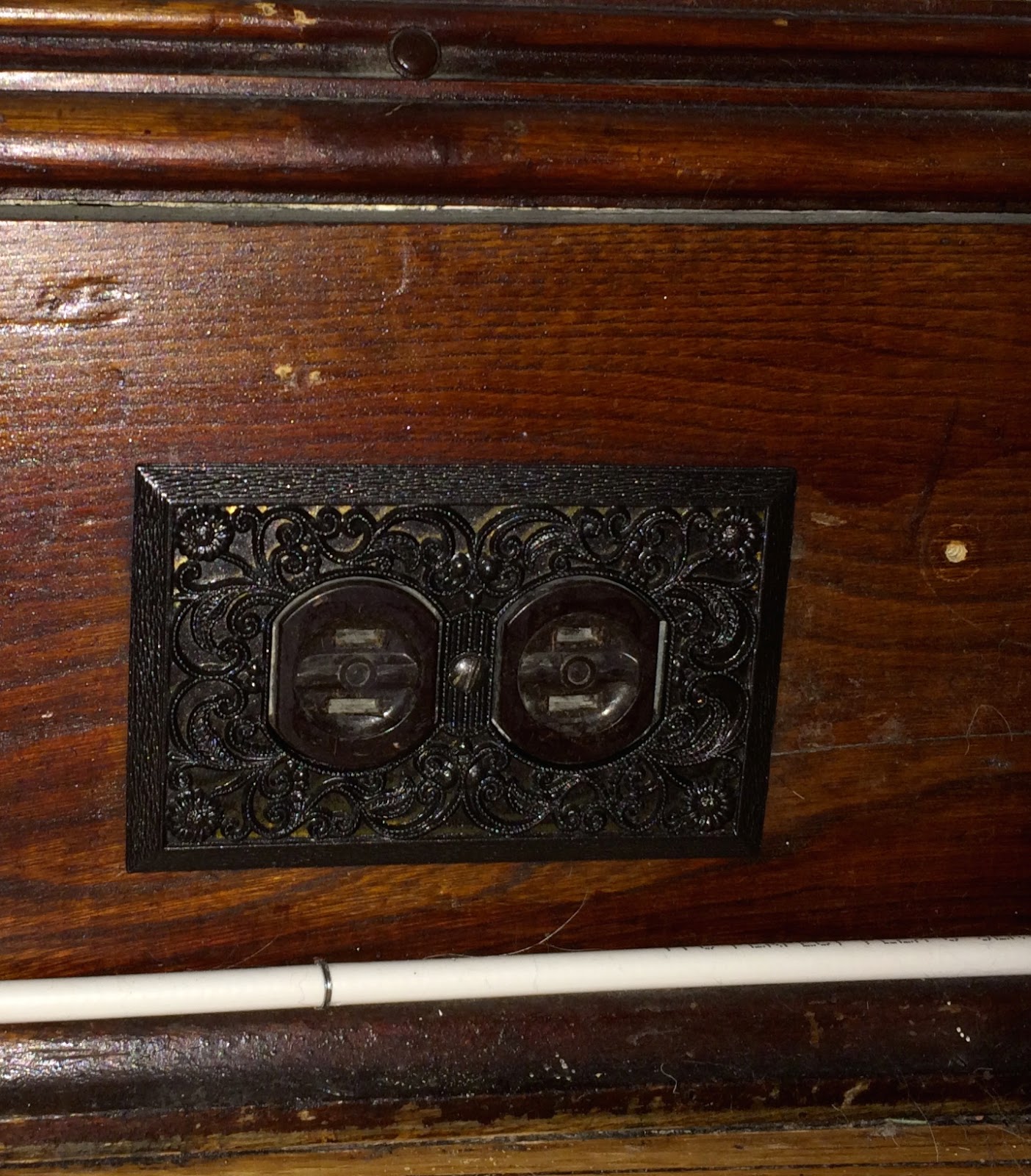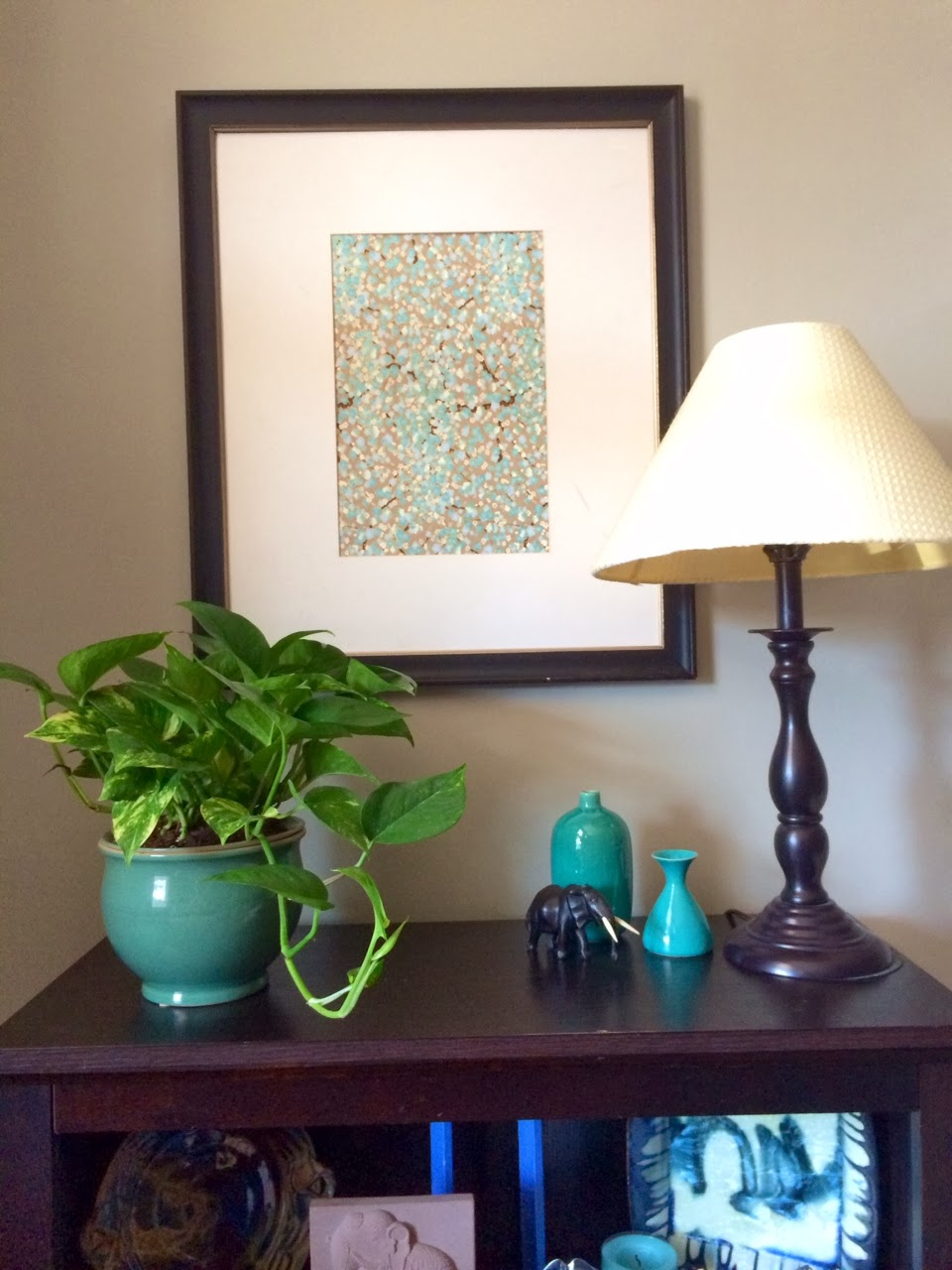Ever since we moved in, the lights on the first floor have bothered me. Generally, they are way too shiney and bright for my taste. The dining room chandelier is massive and bright chrome with odd little plastic ball things. The fireplace room and the entryway both have the same brassy glassy fixture. All of them are generally unattractive when turned off, and cast really ugly light when turned on. So replacing them has been on the to-do list for a while.
Bright shiney chandelier
brassy glassy in fireplace room
another brassy glassy in the entryway
to make it worse- from my spot on the couch I can see all three at once.
closeups- so big and bright.
brassy and twirly. Cringe.
So- amazingly- for Christmas this year, my mother in law gave us a new chandelier for the dining room. This was an awesome gift for a couple reasons:
- The dining room is looking awesome now that we have all the new furniture, so upgrading the lighting will complete one fantastic room. [We still need a rug and some curtains, but this will make it functional and very close to fully finished.]
- This room will now be furnished 100% with gifts from our parents, which is kind of cool.
- She gave us more than enough to cover the chandelier, plus two more lights. So we can actually fix all three of the horrible offenders at once.
We shopped around a bit online, and were overwhelmed by the thousands of options. It took us a while to narrow down the many many options that are out there (which is why it's now March and we're finally getting to this). We had a hard time agreeing to something that was simple, elegant and timeless, but not "boring". We finally found a chandelier we both liked, and then grabbed a semi-flush mount for the fireplace room and a dangly one for the entry from the same collection. The collection also has a bigger pendant that I'd like to put over the stairs, and some smaller pendants that could go in the kitchen eventually, and then all the lights would be from the same collection and tie together nicely. We ordered the three, they arrived swiftly, and we got to work.
Switching out a light is easy generally, and basically the same process as
switching out an outlet. The thing that makes it more difficult is the weight of the fixture, and the fact that you're installing it above your head while on a ladder or chair. We started out with the smallest one and worked our way up to the chandelier.
Step 1. Turn off the circuit breaker & light switch.
This is really important, so I'm making it its own step.
Step 2. Remove old light.
The light is just held in place with a couple screws. Once they are removed, you just have to untwist the wires to disconnect it entirely. This is an easy step- the important part is just keeping track of the old wires for the next step. It's also definitely a two-man job, since you need someone to hold the weight of the fixture while the other person messes with the wires. We took turns so our arms wouldn't fall asleep.
Step 3. Attach new light to the same wires the old one used.
In old houses, the old wires never look like the instructions drawing- so the important thing is just to repeat whatever the previous light had going on. If the old one worked, then the new one will.
Step 4. Attach new light to box.
Generally also easy, but definitely requires two people and ladders so you can see. The other trick is getting enough light to see- since all the outlets in the room are probably off at this point. We have trusty camping headlamps that work great.
Step 5. Turn on circuit breaker.
So this was the point where our easy weekend project took a bit of a turn. All three of our new fixtures said they needed 100 watt bulbs, so I ran over the store and dutifully picked up a bunch of 100-watt bulbs before we got started. Once the new fixture was installed and turned on with the new bulbs, we clearly had a problem.
tanning salon.
Step 6. Rethink bulbs.
After a bit of googling, we discovered that lamps are rated for the highest wattage light bulb they can handle, but they can (and probably should) use much lower watt bulbs (apparently it creates a fire risk to use higher wattage bulbs, so don't do that). I haven't really paid a lot of attention to light bulbs in the past, usually just grabbing whatever was at the store, so I didn't have a good sense of what would look good.
So, at this point, we pilfered all the light bulbs from the rest of the house to try them out. We had a bunch that were 40 watt (these are all CFLs actually, so I'm using their watt equivalents), and a bunch that were 75 watts. We also had some that were "soft white" colored and others that were "reveal" colored. We took the time to try out the options and decided that we liked soft white better, but weren't in agreement about the brightness. I prefer the 40 watts, while the husband likes more light. So we ran back to the store to return the 100 watters and buy a bunch of new 40 and 60 watters, and agreed to let this room be brighter (for now) and the entryway to be dimmer. Also, because we are using CFL bulbs, we can't use a dimmer. For the dining room which has a dimmer, we bought halogen lights because they can be dimmed.
75 watt - reveal color
Step 7. Repeat.
It was easy enough to then move into the entryway and tackle that room, but it took longer for us to muster the strength to do the dining room (the heavier it is, the more of a pain). We finally got around to it, and now everything is done. The only remaining task is to put up the old lights on craigslist and hopefully get some dough back.
new fireplace room semi-flush mount
Fireplace room (maybe still too bright?)
entryway light
Entryway with new dangly fixture
new chandelier
dining room looking good
Not only do all three rooms look much nicer when the lights are off - they look infinitely better when the lights are on. The frosted glass shades help diffuse light more than the previous clear glass did, reducing the glare. Maybe it's the lack of brass or just nicer bulbs, but the light is much less yellow than it used to be, so the rooms generally seem a little less sickly.
So, three rooms get massively more attractive. Thank you Jody!!!
Total Time = 2 weekends
Active Time = 6 hours












.JPG)
.JPG)














.JPG)



.JPG)









